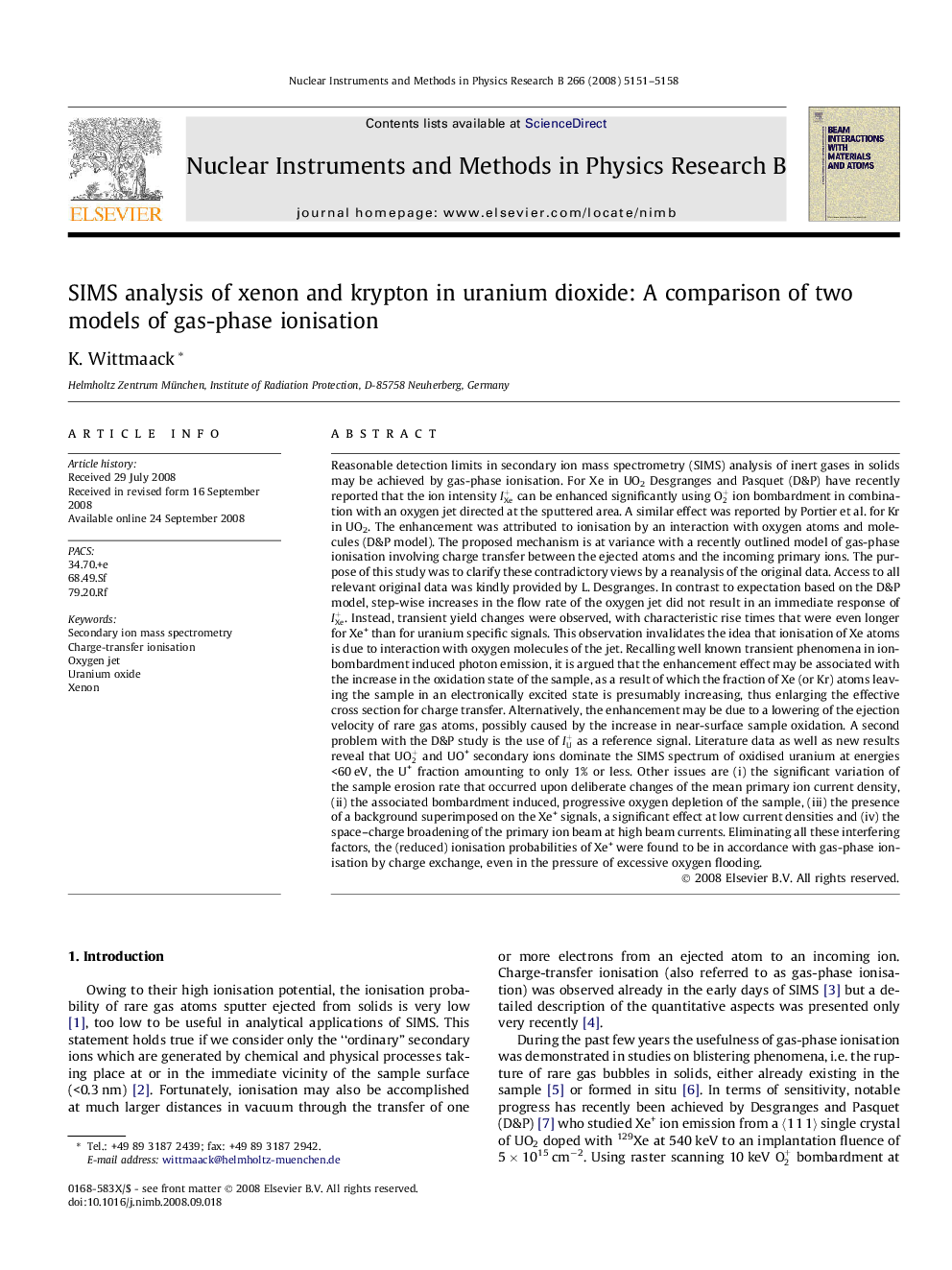| کد مقاله | کد نشریه | سال انتشار | مقاله انگلیسی | نسخه تمام متن |
|---|---|---|---|---|
| 1685482 | 1010562 | 2008 | 8 صفحه PDF | دانلود رایگان |

Reasonable detection limits in secondary ion mass spectrometry (SIMS) analysis of inert gases in solids may be achieved by gas-phase ionisation. For Xe in UO2 Desgranges and Pasquet (D&P) have recently reported that the ion intensity IXe+ can be enhanced significantly using O2+ ion bombardment in combination with an oxygen jet directed at the sputtered area. A similar effect was reported by Portier et al. for Kr in UO2. The enhancement was attributed to ionisation by an interaction with oxygen atoms and molecules (D&P model). The proposed mechanism is at variance with a recently outlined model of gas-phase ionisation involving charge transfer between the ejected atoms and the incoming primary ions. The purpose of this study was to clarify these contradictory views by a reanalysis of the original data. Access to all relevant original data was kindly provided by L. Desgranges. In contrast to expectation based on the D&P model, step-wise increases in the flow rate of the oxygen jet did not result in an immediate response of IXe+. Instead, transient yield changes were observed, with characteristic rise times that were even longer for Xe+ than for uranium specific signals. This observation invalidates the idea that ionisation of Xe atoms is due to interaction with oxygen molecules of the jet. Recalling well known transient phenomena in ion-bombardment induced photon emission, it is argued that the enhancement effect may be associated with the increase in the oxidation state of the sample, as a result of which the fraction of Xe (or Kr) atoms leaving the sample in an electronically excited state is presumably increasing, thus enlarging the effective cross section for charge transfer. Alternatively, the enhancement may be due to a lowering of the ejection velocity of rare gas atoms, possibly caused by the increase in near-surface sample oxidation. A second problem with the D&P study is the use of IU+ as a reference signal. Literature data as well as new results reveal that UO2+ and UO+ secondary ions dominate the SIMS spectrum of oxidised uranium at energies <60 eV, the U+ fraction amounting to only 1% or less. Other issues are (i) the significant variation of the sample erosion rate that occurred upon deliberate changes of the mean primary ion current density, (ii) the associated bombardment induced, progressive oxygen depletion of the sample, (iii) the presence of a background superimposed on the Xe+ signals, a significant effect at low current densities and (iv) the space–charge broadening of the primary ion beam at high beam currents. Eliminating all these interfering factors, the (reduced) ionisation probabilities of Xe+ were found to be in accordance with gas-phase ionisation by charge exchange, even in the pressure of excessive oxygen flooding.
Journal: Nuclear Instruments and Methods in Physics Research Section B: Beam Interactions with Materials and Atoms - Volume 266, Issue 24, December 2008, Pages 5151–5158